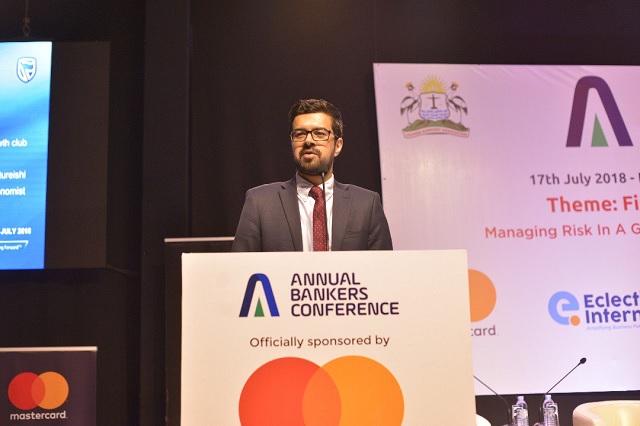
Kampala, Uganda | THE INDEPENDENT | Uganda acted prudently by going slow on the Standard Gauge Railway (SGR) project which meant delays in borrowing at least USD 2.3 billion or more than Shillings 8trillion, according to experts.
This is the estimated cost for only the Malaba-Kampala stretch, but the whole project connecting North and Western Uganda was estimated at US$12billion or Shillings 44 trillion an equivalent of the country’s annual budget.
Jibran Qureishi, the Head of Africa Research at the Standard Bank Group, says these were amounts too big for a country like Uganda to risk borrowing, with the uncertainty over the economic viability of the SGR project.
There have been on-and-off negotiations with the China Export-Import (EXIM) Bank to secure financing for the project, which is supposed to be connected by a future Mombasa-Kisumu SGR line. For now, the Kenyan section of the project terminates in Naivasha with the stretch to Kisumu yet to be decided on.
Qureishi says the returns expected from the Kenya SGR are yet to be realized, while it has made about USD 200 million in losses over the last three years, according to the Foreign Policy Research Institute.
He was speaking at a debt conference in Kampala, on the theme: Building Stronger Partnerships for Sustainable Financing in Uganda”, organized by the World Bank and the Ministry of Finance, Planning and Economic Development.
Qureishi also hailed Uganda’s prudence when it refused to issue euro bonds when all African states embraced the newly touted source of debt about 10 years ago. Euro bond is a debt instrument issued by a company, individual of government in a country of its choice from where it expects to get credit in a certain currency, and attractive returns.
It usually carries a fixed interest rate, which increases the risk of distress in case the issuing government or company encounters unfavourable economic environment.
Qureishi said that unlike other countries, for seven years Uganda rejected all the prodding, saying it did not need the expensive money.
In 2021, Uganda’s debt risk deteriorated from ‘low’ to ‘moderate’ as the debt stock rose to about 20 billion dollars and a 50 percent Debt-to-GDP ratio. With the expected borrowing of at least 9 trillion shillings to fund the 2022-23 budget, the ratio is expected to rise to 55 percent.
Though this is lower than in most countries in the region, experts are worried at the rate at which the debt levels are rising and this could soon take Uganda to the levels witnessed in Kenya, Rwanda, Zambia and Ghana, among other countries.
On how to prevent this crisis and yet continue borrowing to finance development, Qureishi said there is need to assess the quality of debt rather than the quantity of investment, to ensure better returns on investments.
“The country also needs to focus on boosting savings which would be a cheap and convenient source of debt for government to spur infrastructure investments, but also source for the reasonably priced funding options,” he says.
He also noted the complicated bureaucracy in public procurement process which makes debt costlier when projects are delayed, as well as the introduction of a robust regulatory framework for Public Private Partnerships.
Minister of State for Finance, Henry Musasizi admits that the rate of increase in borrowing over the last few years has been very high and affected Uganda’s rating in debt risk management. He says government is committed to maintain debt within sustainable levels in the medium term, adding that this will be done through implementing the Medium Term Debt Management Strategy.
In 2016-17, the debt stock was US$9.35 billion and rose to US$ 15.26 billion in 2019-2020, before rising to about US$20.74 billion by December 2021. Over these years, the government borrowed heavily for investment in infrastructure, and from 2020, the debt stock was boosted by the increased financial needs following the outbreak of COVID-19.
Domestic borrowing in particular has risen to 4.9 percent of GDP, far above the NDP 3 target of 2 percent. Musasizi says this is affecting government programs, with a big chunk of domestic tax revenues going to servicing debt.
The minister says borrowing will continue in spite of this, but that they will more and more go for cheap concessional loans as opposed to commercial loans.
In addition, Musasizi says the government is pushing for a review of borrowing terms which he calls unfair, basing on the fact that the government of Uganda has never defaulted on repayment.
According to the Director Development Finance at the World Bank, Samuel Maimbo, debt levels have been rising across the world. The bank is implementing the Sustainable Development Finance Policy to incentivize countries to move towards transparent sustainable financing.
As part of the solution, Maimbo says every international lender should have terms and conditions of their loan products displayed and easily found by the borrower, so that any borrowing is based on informed decisions.
****
URN
 The Independent Uganda: You get the Truth we Pay the Price
The Independent Uganda: You get the Truth we Pay the Price



